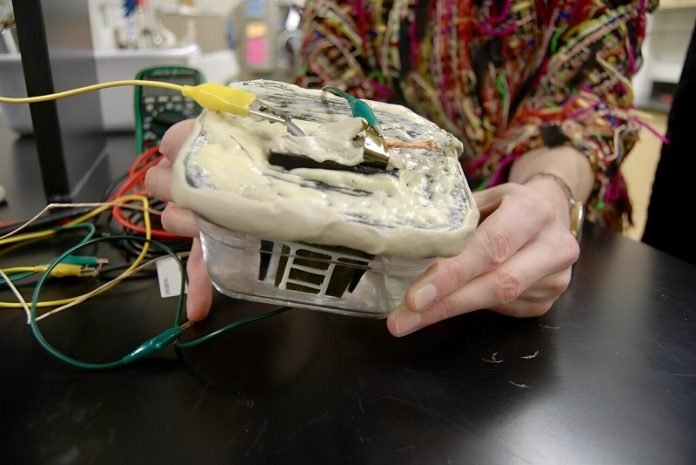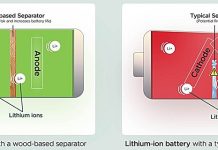
In a world that’s rapidly embracing smart technology, from the cars we drive to the farms where our food grows, there’s a growing need for power in places where plugging into an outlet isn’t an option.
This is where the Internet of Things (IoT) comes in, connecting devices over the internet to gather data and perform tasks without human intervention.
However, powering these devices, especially in remote or hard-to-reach areas, has been a big challenge.
But researchers from the University of Utah’s College of Engineering might have found a solution.
Meet the pyroelectrochemical cell (PEC), a new type of battery that’s turning heads.
Created in the labs of Roseanne Warren and Shad Roundy, two associate professors of mechanical engineering, this battery can charge itself by simply soaking up the changes in temperature around it.
Whether it’s tucked inside a car, hidden beneath the soil, or sitting in an airplane, the PEC can use the warmth or coolness of its environment to generate power.
This makes it perfect for IoT devices that are placed in locations where traditional power sources are unavailable or impractical to use.
Imagine soil sensors that help farmers know when to water their crops or devices in your car that monitor its health, all running without needing a plug or the sun.
That’s what the PEC is all about. Traditional solar panels, while useful, struggle in many situations.
They can get dirty, which reduces their effectiveness, or simply can’t catch enough sunlight, like under the soil. The PEC offers a clever workaround by relying on temperature changes instead of sunlight.
The secret behind the PEC’s power lies in its unique material—a blend of porous polyvinylidene fluoride (PVDF) and tiny particles of barium titanate.
These materials react to temperature changes by adjusting their electrical properties, which, in turn, generates an electric charge.
This charge is stored in what’s called an electric double layer, creating a reservoir of energy that can be tapped into when needed.
The research team, led by Tim Kowalchik, a graduate student, put the PEC through a series of tests to confirm their theories about how it could generate and store energy.
They found that by simply heating or cooling the device, they could effectively store electrical energy.
The experiments also looked at what happens when the device’s orientation is changed, showing that this too could influence the way the battery charges.
Though the PEC might not produce a massive amount of energy—up to 100 microjoules per square centimeter from a heating or cooling cycle—it’s enough to power low-energy devices like sensors.
These sensors don’t need much power since they’re not running screens or sending constant data. Instead, they wake up, send an update, and go back to sleep, making the PEC’s output suitable for many IoT applications.
The next steps for the team involve refining the design of the PEC to improve its energy harvesting and storage capabilities, followed by field tests to see how it performs in the real world.
This breakthrough could open the door to a future where smart devices can be powered almost anywhere—under the soil of a farm, inside the engine of a car, or anywhere else where traditional power sources fall short.
Source: University of Utah.



